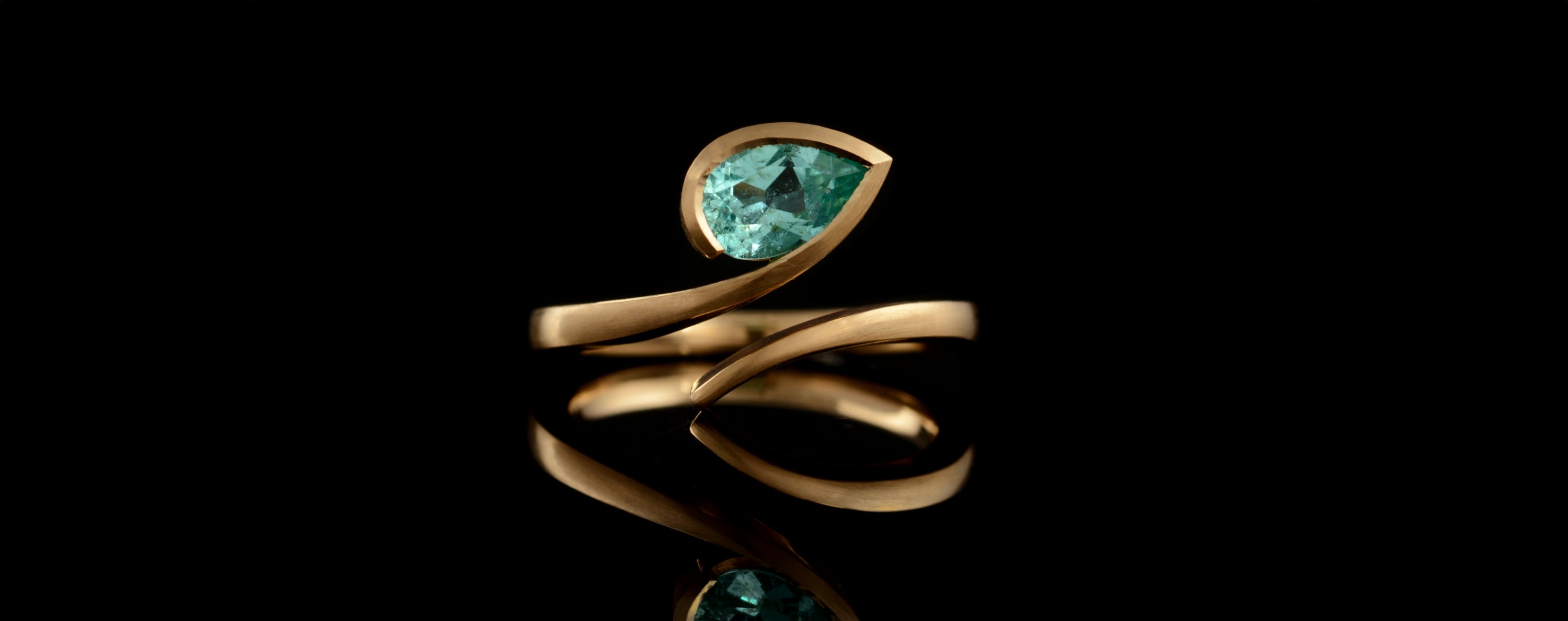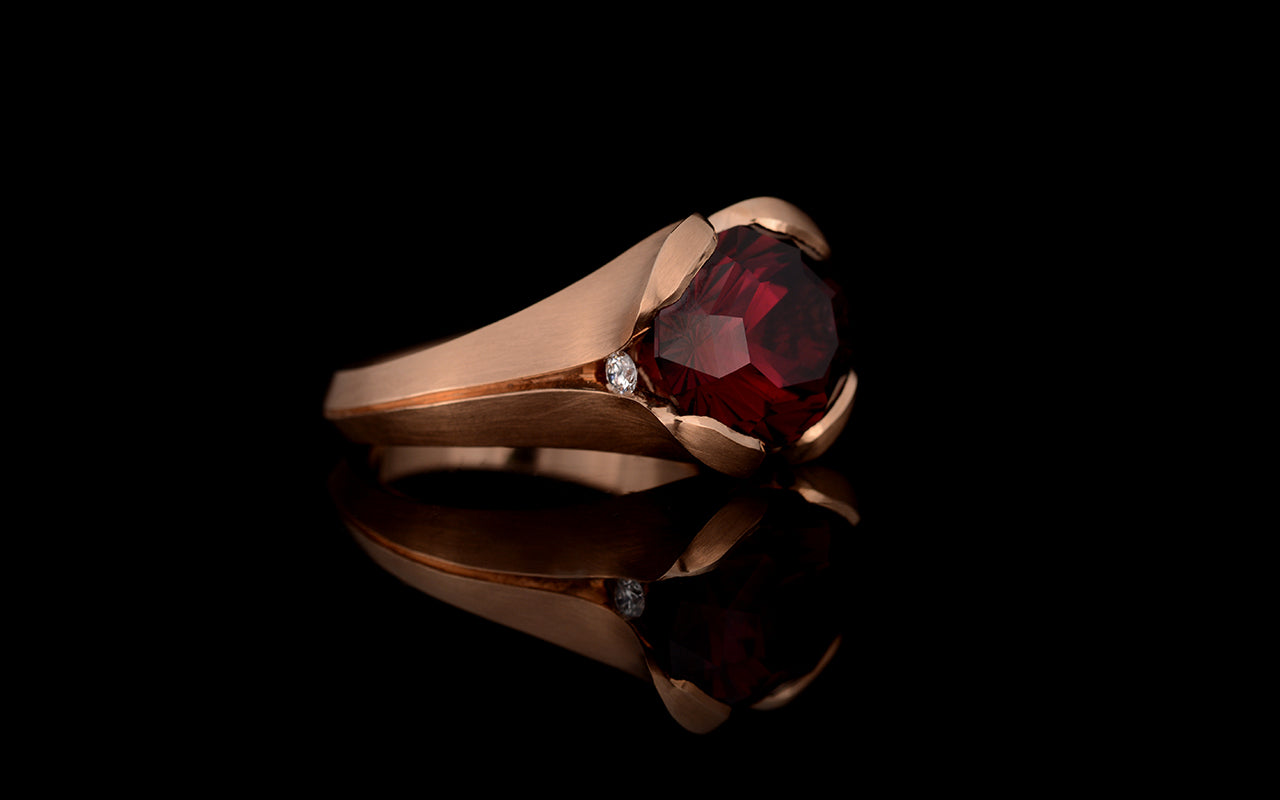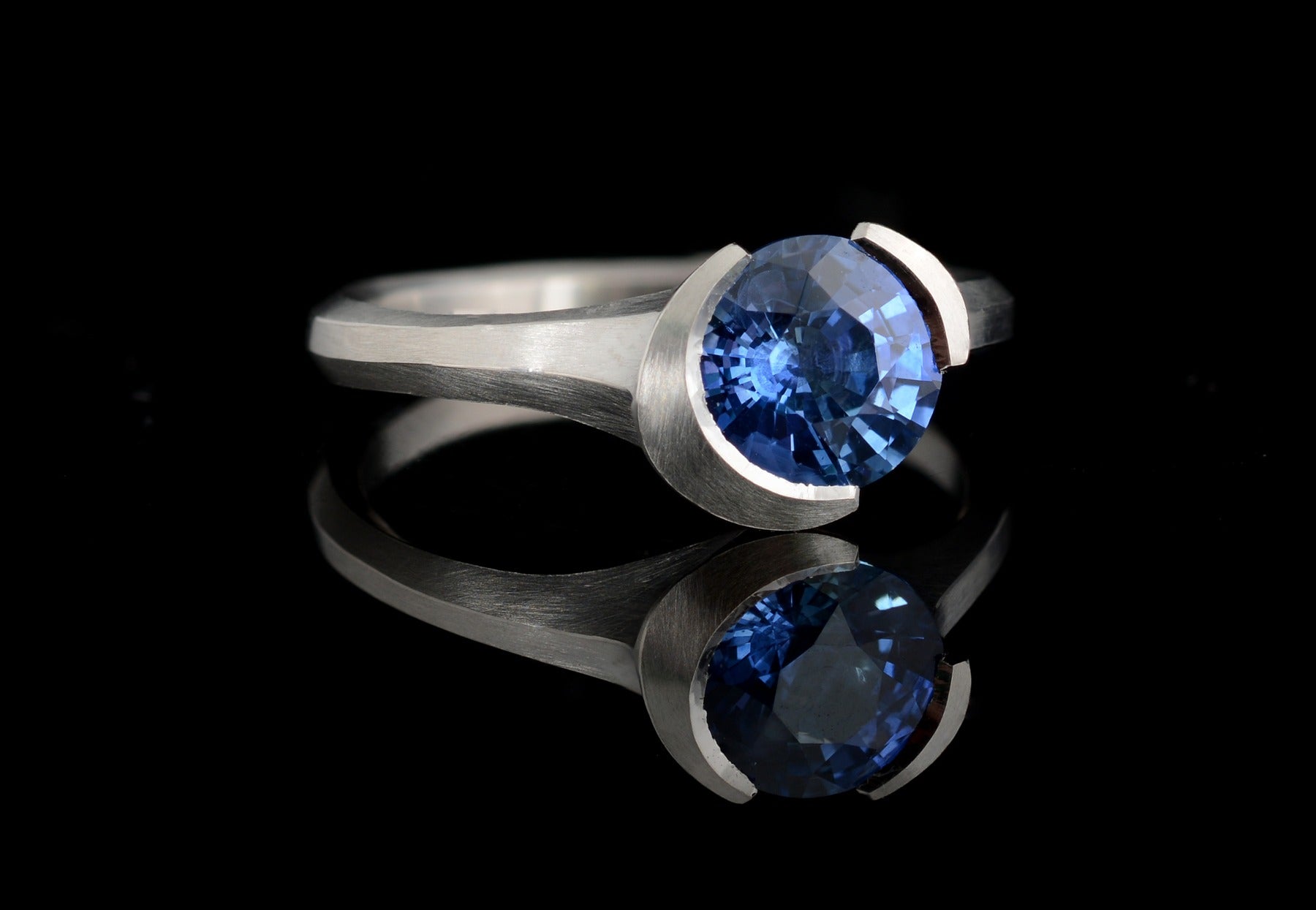
Why Paraiba tourmaline makes exceptional engagement rings
Rarer than diamonds, with distinctive neon blue-green hues and light tone that gives the appearance of it being lit from within, Paraiba tourmaline engagement rings stand apart from other coloured gems. Since its relatively recent discovery, Paraiba tourmaline has become a highly sought-after gemstone, prized for its unique colours. But what is Paraiba tourmaline? Why is it so sought after? And why should you consider Paraiba tourmaline for your engagement ring?
Paraiba tourmaline is a copper-bearing tourmaline, first discovered in 1986 in the Paraiba region of Brazil from which it takes its name. It is part of the tourmaline family of gemstones which has a hardness of 7.0-7.5 on the Mohs’ scale making Paraiba tourmaline suitable for most jewellery, including rings.
Paraiba tourmaline is found in vivid hues of green, pink, purple and violet, but the most easily recognisable and highly valued colour is blue. Often described as ‘neon’ or ‘electric’, the intensely saturated colours of Paraiba tourmaline are the result of the copper present within its crystal structure. Although pink, purple, and violet Paraiba tourmaline are far rarer than blue tourmaline, their value is less, simply because there is less demand. Colour is the determining factor in the value of Paraiba tourmalines. So, a more vivid small stone will have a higher value than a less saturated larger stone.
Rarity, of course, is also a factor in Paraiba’s value. High quality examples, free from inclusions, are exceedingly rare and command high prices. Tourmaline forms in liquid-rich environments and during its formation some of these may be trapped within its structure as inclusions. These inclusions are visible as hollow thread-like tubes running parallel to the length of the crystal. High quality blue Paraiba tourmaline will be free of inclusions. Paraiba’s rarity is also due to the difficulty of mining the stone. The use of dynamite can damage the crystals, so most Paraiba tourmaline is mined by hand with manual tools.
The rose gold sculpted four claw Paraiba solitaire engagement ring is a standout handmade take on the classic four claw solitaire ring. Seen here in satin finished rose gold, set with a round 1.02ct paraiba tourmaline.
When it was first discovered in the 1980s, the demand for Paraiba tourmaline exploded, quickly driving the price to well over $10,000 USD per carat – far outstripping any other tourmaline. Demand from consumers was insatiable, particularly in Japan. Given its incredible colour and internal glow it is easy to see why Paraiba made such an impact. Each stone has its own unique character, and it is rare to fine two Paraiba’s exactly alike.
Its spectacular colour and unrivalled individuality make Paraiba an excellent choice if you are looking for an engagement ring that is out of the ordinary. We use Paraiba tourmaline throughout our collections, and find it pairs beautifully with rose, yellow, white gold or platinum. Our Paraiba tourmaline is sourced from trusted dealers in the UK and Europe and we can help you to find the perfect gemstone for your design.
This modern rose gold Twist engagement ring set with a stunning pear Paraiba tourmaline is a very popular design because of it's striking design and unusual coloured gemstone.
Why would you choose a Paraiba tourmaline over another coloured gem or diamond? Paraiba’s saturated turquoise hue, remarkable internal glow and highly individual character make it an incredibly special stone. Ultimately, selecting a stone for an engagement ring is a personal choice and we recommend that first and foremost you consider which stone has the most immediate appeal to you. These are exceedingly individual stones, and your personal preference is all that matters!
You can see some of our Paraiba pieces or to find out more about Paraiba tourmaline or discuss a commission please get in touch for a chat.





